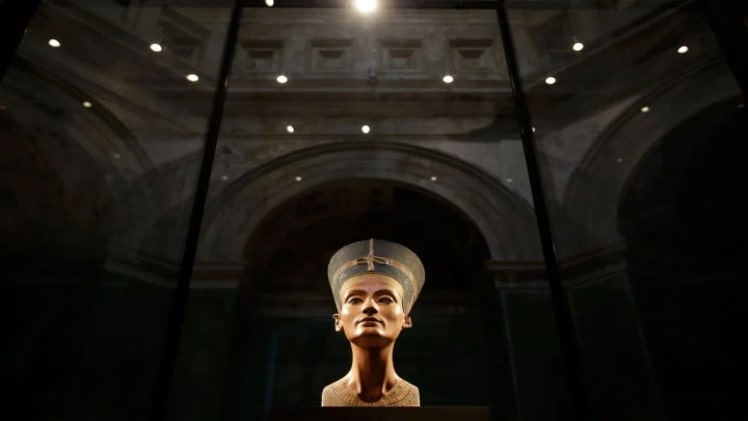The Bust of Nefertiti

The Bust of Nefertiti is the most famous Egyptian statue, whose creation is believed to have taken place in 1340 BCE during the Amarna Period. This statue was found without inscriptions, but it is recognized by her trademark flat top crown and her missing bureaus. The core of the bust is made from limestone, covered in plaster. This process allowed exceptional molding of the face. It is a masterpiece of Egyptian art.
The Bust of Nefertiti has been in Germany since 1913. It was kept secret until 1920, when it was permanently donated to the Berlin Museum. In 1923, it was displayed alongside other pieces from the dig. However, the bust was moved several times during World War II. During World War II, the bust was discovered by the American army. Since then, it has traveled between East and West Berlin but returned to the Neues Museum in 2009.
The Bust of Nefertiti is a treasure. Historically, it represents the wife of Akhenaten, the ruler of Egypt from 1353 to 1336BC. Originally, it was found by archaeologist Ludwig Borchardt in 1912. In 1940, it was seized by the Luftwaffe and returned to Egypt. However, in 1941, Nazi Germany decided to reunite with Egypt. The Nazi government had plans to give back the bust, but Hitler wanted it for a museum in Germania, the capital of the Thousand Year Reich.
The Bust of the Queen of Egypt has many layers of meaning. The first layer is her bust, which is topped with a golden diadem band. Its cap crown has a broken cobra over her brow and a floral-patterned wide collar. Her ears are damaged, which may be a reference to a hefty flower. The crown is decorated in a manner consistent with Egyptian art, while the crown remains in a classical style.

